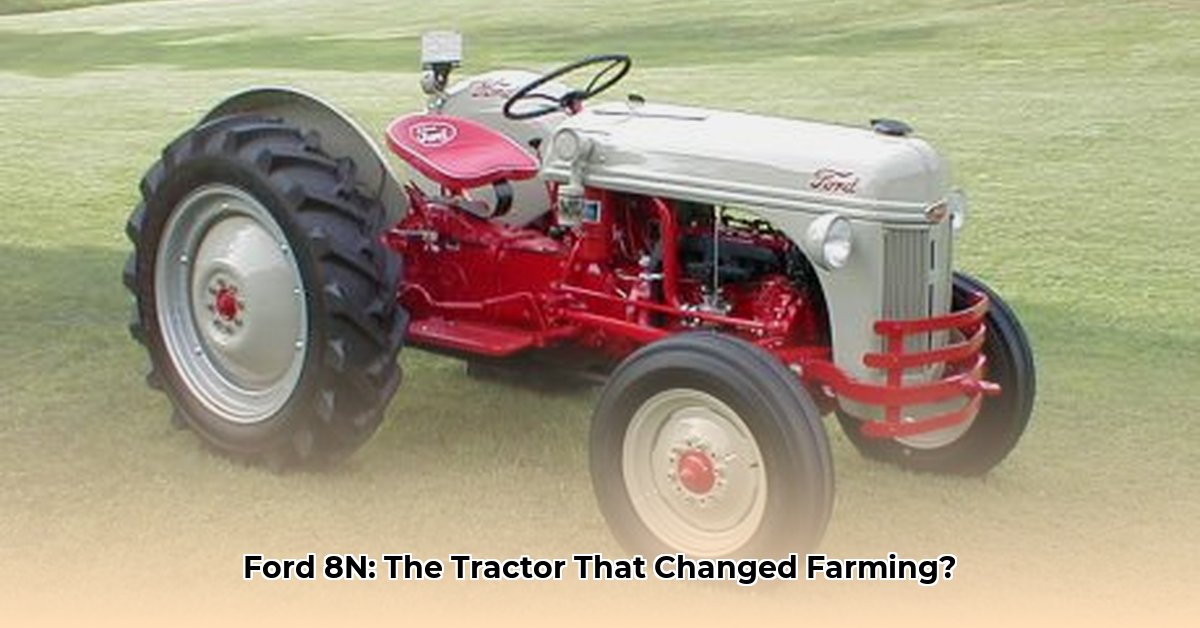
The 1950s witnessed a seismic shift in American agriculture, propelled largely by the Ford N-series tractors—the 9N, 2N, and most famously, the 8N. These weren't mere machines; they were symbols of post-war prosperity and agricultural innovation, transforming farming practices and shaping the industry's future. This article delves into the technical brilliance, historical context, and enduring legacy of these iconic tractors. For more detailed specifications, visit the Ford N-Series resource.
The Three-Point Hitch: A Technological Leap
Before the Ford N-series, attaching farm implements was a laborious, time-consuming process. Enter Harry Ferguson's revolutionary three-point hitch, a system that fundamentally altered how farmers interacted with their machinery. This ingenious mechanism enabled effortless raising, lowering, and angling of implements using a single lever. What impact did this have? Tasks once requiring hours now took minutes, dramatically boosting efficiency. The 9N, the first Ford tractor to feature this system, was an immediate success, a testament to its game-changing design. Even the wartime 2N, a modified response to material shortages, retained this crucial feature.
The 8N: A Post-War Phenomenon
The post-war era saw a desperate need for efficient, reliable agricultural machinery. The 8N, building upon the success of its predecessors, perfectly answered this demand. It combined a more powerful engine (12-14 horsepower), improved user-friendly design, and smoother transmission compared to the 9N and 2N. Its rugged construction and surprisingly affordable price made it an instant hit. Sales figures for the 8N soared, cementing its status as a legendary machine. Its enduring popularity speaks volumes about its simplicity, dependability, and ease of maintenance: a true workhorse for the American farmer. Did you know that the readily available parts for the 8N further contributed to its market dominance?
The Ford-Ferguson Partnership: A Story of Collaboration and Conflict
The narrative of the Ford N-series is inextricably linked to the complex relationship between Henry Ford II and Harry Ferguson. While Ferguson's three-point hitch was undeniably pivotal, their partnership was far from smooth sailing. Disagreements over patents and business control eventually culminated in a bitter legal dispute, forever altering the trajectory of both Ford and Ferguson's companies. The legacy of this collaboration-turned-conflict remains a topic of debate among agricultural historians, with some highlighting Ferguson's innovation and others emphasizing Ford's manufacturing prowess and marketing strategy. What is undeniable is the impact of their initial cooperation which produced the 9N and 8N.
Lasting Impact and Enduring Legacy
The N-series tractors' influence on farming is immeasurable. They dramatically enhanced efficiency and productivity, fundamentally transforming agricultural practices. The three-point hitch, a cornerstone of their design, became an industry standard, serving as a blueprint for subsequent tractor models. These iconic machines, embodying robust engineering and timeless design, are highly sought-after by collectors and even remain in operation on some farms today, a tangible link to the past and a testament to their enduring quality.
Key Features Comparison: 9N, 2N, and 8N
| Model | Engine Horsepower (approx.) | Transmission Type | Three-Point Hitch? | Key Features |
|---|---|---|---|---|
| 9N | 9 | Sliding Gear | Yes | Introduced the revolutionary three-point hitch |
| 2N | 9-12 | Sliding Gear | Yes | Wartime modifications, reflecting material scarcity |
| 8N | 12-14 | Sliding Gear | Yes | Improved design, unparalleled sales success |
The Ford N-series tractors of the 1950s were more than just agricultural machinery. They were a symbol of post-war progress, innovation, and the American spirit of ingenuity. Their story is a compelling blend of technical achievement, business strategy, and lasting impact on farming, a legacy that continues to shape the industry to this day.